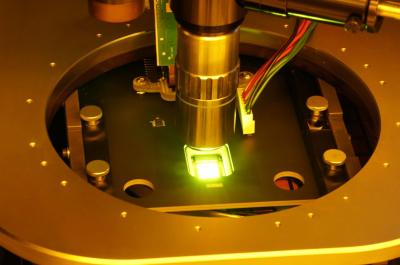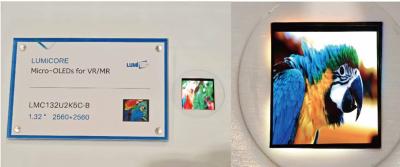Researchers at the Fraunhofer IPMS developed a 200,000 nits monochrome OLED microdisplay
The Fraunhofer IMPS announced that it has developed an exceptionally bright OLED microdisplay, using a novel stack architecture. The new 0.62" SXGA monochrome (green) microdisplay achieves a brightness of 70,000 nits, and on reference substrates it has even achieved over 200,000 nits.
The new architecture uses a 3-stack architecture, which means that three complete OLED device stacks are placed on top of the other. This achieves high brightness, and also reduces the current density for a given brightness compared to a single stack device - and so enhances the lifetime of the device.












